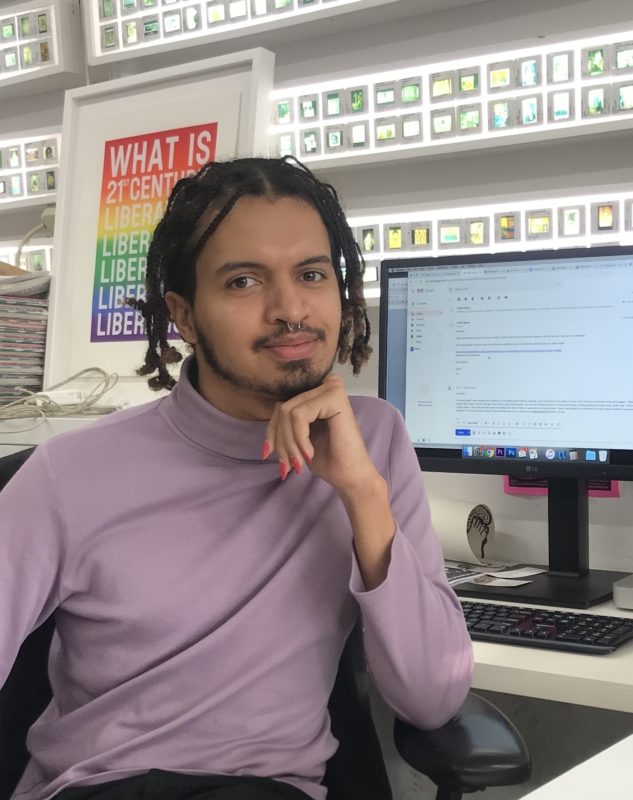Visual AIDS is excited to announce our new Programs Associate, Blake Paskal. Blake is a teaching artist at The Studio Museum in Harlem and at the Museum of Modern Art, and brings a passion for education, art-making, and critical thinking to Visual AIDS.
I’m thrilled to be working with Visual AIDS as the new Programs Associate. I’ve long been inspired by Visual AIDS' commitment to using art as a vehicle for activism and raising up the voices, artistic contributions, and histories of those impacted by HIV/AIDS. I’m excited to have joined a small but dedicated team and an even larger family of artists, thinkers, and activists connected to the organization. Already two months in I’ve been consistently inspired and rejuvenated by an organization whose practices are so firmly rooted in caretaking and thoughtfulness.
I come to Visual AIDS with a background as both an artist and museum educator. Both my art-making and education practices are informed by my lived experience as a queer, gender nonconforming, black/mixed race person. Through my work I strive to hold space for ambivalence and challenge the binary modes of thinking and doing that are engrained in all of us. Always having been somewhere in the in-between myself, I’ve naturally been interested in creating objects or spaces that encourage us to move beyond either/or thinking, to work through the ‘messiness’ of human experience, and ultimately find points of connection.
Prior to Visual AIDS, I worked in Education at the Guggenheim for two years as the Public Engagement Coordinator leading access programs, tours for the general public, and trainings sessions for other educators. Currently, I’m also employed as a teaching artist at both The Studio Museum in Harlem, where I’ve been for three years, and in MoMA’s Community/Access programs, a position I just took on. In all of these institutions I have led tours and programs that center artists, art histories, and perspectives that are often excluded from dominant narratives, challenging the assumption of whiteness and cis/heteronormativity as standards.
I’ve always sought to create inclusive spaces that welcome the participation of folks that are new to the arts or have a different relationship to art viewing, developing new strategies to engage them and working to imagine how museums can operate in new ways. Most notably, I’ve led and organized the Guggenheim’s Mind’s Eye program for people that are blind or have low vision and, through The Studio Museum, have led art-making workshops with houseless LGBTQ+ youth and young adults at the Ali Forney Center.
In my work at Visual AIDS, I’m attentive to how we can apply nuance when discussing the intersecting factors of race, gender, disability, geography, and class while amplifying and centering the artists most impacted by the virus. I’m interested in how these factors have influenced the construction of narratives around HIV and how they consequently affect who is considered worthy—or considers themselves worthy—of being remembered. I believe that remembrance functions as a form of empowerment, self-care, and love, things that we are all more deserving of regardless of serostatus or other identity markers.
With all of these foundations informing my work at Visual AIDS, I plan to continue a rich history of using art to educate and motivate through the coordination of public programs, exhibitions, and publications. There’s still so much work to be done, stories to be told, and artists to uplift. I feel honored to be a part of this legacy and look forward to growing and working alongside this community.
